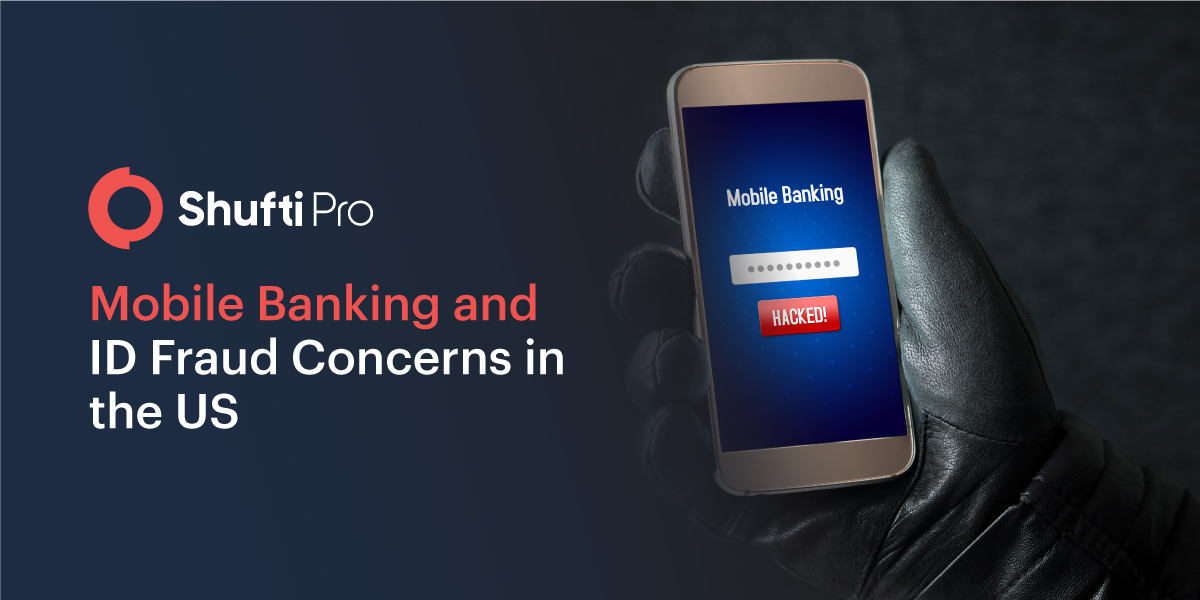Mobile Banking Adoption and the Rising Fraud Concerns Worldwide

People have been repeatedly talking about the COVID-driven digital “transformation” in the banking sector. However, it is more of a rapid digital adoption rather than transformation that everybody is referring to. A recent study showed a significant increase in mobile banking adoption in all generations across the world. However, regulatory authorities and the banking sector are concerned about the exponential increase in criminal activities due to the adoption. According to Forbes, banks spend approximately $40 billion every year on fraud. Let’s take a look at how mobile banking adoption has increased the threat of frauds in 2021.
What are Mobile Banking Trends in 2021?
The key mobile banking trends in 2021 include:
- The growing threat of fraud is the top trend to watch out for this year
- Personalised banking applications for end-users
- Voice recognition for transactions
- Video interview KYC for remote identity verification
- AI-driven customer support system

Top 5 Frauds Threatening the Banking Sector
Here are the top five frauds that are threatening the banking sector in 2021:
1- Identity Theft
In a recent virtual meeting by the US Congress, it was found out that FTC received 1.3 million identity theft complaints in 2020. Illegally acquiring personally identifiable information (PII) has been a looming threat for businesses for a long time. This year, however, the threat is at its peak. Advanced technology is helping them gain unauthorised access to bank accounts or create fake bank accounts with stolen identity details.
Suggested: | Identity Theft Frauds – How can you stay a step ahead?
2- Business Email Compromise
Email being the means of communication in the majority of the organisations is also the target of imposters in the digital world. Fraudsters are now targeting the management for gaining unauthorised access to the bank’s confidential data. Did you know around 15,000 scam emails, calls and text messages are sent every day? Unwary victims click on the malware links shared and end up losing sensitive information to perpetrators.
Recommended: Phishing Attacks and the Role of Two-Factor Authentication

3- Job Scams
People looking for a job in the banking sector are also the target of perpetrators these days. During the COVID-19 pandemic, job scams soared skyhigh and many people fell victim to fraudulent job offers. Due to increasing unemployment, every job was compelling for people and fraudsters took complete advantage of the situation. Money laundering in the frame of jobs became the new normal. According to Euorpol, black money that comes from malware, ransomware, business email compromise, CEO fraud, romance scams, and phishing is generally hidden through fake job posts and money muling. People who are new in a region or actively searching for jobs are the most targeted individuals for money mule scams. Furthermore, the job posts seem very legitimate making it harder for anyone to identify the ill aims of the recruiter.
Recommended: Jobs in the frame for money laundering
4- Account Takeover Fraud
According to the Security Magazine, 42% of the frauds reported in 2020 were account takeover frauds and this is an emerging threat in 2021 as well. A fraudster impersonating as an employee persuades account holders to provide their login details. What’s the impact? Well, using accounts for transferring illegally earned money or using them for terror financing are two of the most common results of account takeover (ATO) fraud.
Recommended: | Account Takeover Frauds – Impact, Causes, and Prevention
5- Debit and Credit Card Fraud
Ever since debit and credit cards have entered the world, credit card frauds have significantly increased as well. With more people shifting to the online shopping world, the number of reported frauds is beyond imagination. A Federal Trade Commission (FTC) report reveals that 66,090 cases of credit card frauds were reported in 2020 and the looming credit card fraud threat continues to increase in 2021 too.
Suggested Read: | Credit Card Frauds- How Can You Prevent It?
How Can Banks Mitigate the Risks of Frauds?
Although the threat of frauds is increasing rapidly after the mobile banking adoption, there is always a way out of the problem. The banking sector must employ digital identity verification solutions that can verify the risks of all types of identity fraud in seconds. With a market-leading accuracy rate of 98.67%, Shufti’s video interview KYC is what banks need now more than ever. The process is comprehensive yet simple ensuring state of the art user experience. In less than a minute, the KYC expert verifies the identity of the end-user on a live video call. Here’s how the process goes:
- The end-user registers on the platform
- KYC expert and end-user get in touch on a live video call
- KYC expert interviews the candidate for liveness detection
- End-user shows the government-issued identity document during the video call
- Document is verified for forgery and tampering
- Face of the end-user is matched with the image on the ID document
- Verification results are delivered and stored in the back-office
Suggested: Video KYC – Understanding the ‘what’ and ‘how’ [A short guide]

Key Takeaways
In a nutshell, the increased adoption of online/mobile banking has led to a significant increase in criminal activities. From identity theft to business email compromise and credit card fraud, so many fraud trends in the banking sector are taking over in 2021. Perpetrators are strategically stronger this year and so, the sector needs robust digital identity verification solutions to combat all illicit activities. What could be better than a video interview KYC solution that can verify the identities in less than a minute and ensures the highest possible accuracy?
With Shufti, you can validate the identity of end-users with our state of the art video KYC solution and remotely verify customers for legitimate account opening. Need more information on video KYC? Talk to our experts right away!










